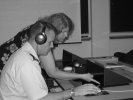
|
||||||
Dedicated to providing information for learning assistance professionals. |
||||||
 |
Moving beyond Dick and Jane: Considering Student Beliefs About ReadingBy Mona Pelkey, United States Military Academy, West Point |
|||||
|
Remember learning to read, 'way back when? Many of us have fond memories of our beloved primary school teachers, and many baby boomers vividly remember their "book friends," Dick and Jane. Do you remember the process of learning to read? What did your teacher tell you to do? When I ask my speed-reading students these questions, inevitably someone will answer, "Read one word at a time. Sound out each word." This is an appropriate strategy for young children who are learning basic reading vocabulary. Unfortunately, these strategies linger even when, as adults with many years of reading practice, we no longer need to read word for word or sound out each word. We read one word at a time and sound out the words in our heads, and this slows down our reading pace so much that we do not read any faster silently than we would if we read aloud. I often meet with resistance when I suggest that it is possible to comprehend well without focusing on every individual word, and that students should use peripheral vision and recognition skills to read and understand phrases. When asked if anyone ever told them that it is OK to read this way, students who have not attended reading classes since elementary school will almost surely say no. My teaching, therefore, clashes with their basic beliefs regarding the reading process. One of my students, a visiting professor taking the speed-reading course, questioned one of the techniques I teach related to finding a purpose for reading. I encourage my students to preview the chapter and look over the questions to be answered before reading. The professor wondered if these techniques were truly effective in terms of improving comprehension. I asked him about his early school experiences regarding reading and answering comprehension questions. Not surprisingly, his teachers told him to read first and then look at the questions. This technique was acceptable in elementary school because the purpose of answering the questions was to check the student's understanding of the story. However, the purpose of chapter questions at the adult level is to help the student to focus on the main points and to encourage learning. My student remarked that he understood the differences in purpose, but he admitted it felt like cheating to read the questions first. His resistance to the new technique was grounded in his beliefs about correct reading process and cheating, not about whether the technique improved comprehension. When he realized the source of his discomfort, he was able to accept the technique.
Although students have basic beliefs about reading, until made aware
of what those beliefs might be and where they come from, they do not
realize how they affect their reading performance. Many of my students
are unaware of their reading beliefs until I present material or assign
exercises that cause them discomfort. Dialoguing about early experiences
in the students' reading development and their beliefs that stem from
that process, especially in those teachable moments when questions arise,
is useful in increasing student awareness. Once aware of the effects
of childhood reading beliefs on adult reading performance, students
are more likely to accept reading instruction that takes them out of
their comfort zone and ultimately enhances their performance. Questions or comments? Contact the author at Mona.Pelkey@usma.edu. |
||||||
| Home::
Past Articles
:: Conferences
:: Citation
Information :: Feedback
:: About
the Authors :: Subscription
Information :: Submission
Guidelines Site Last Updated April 18, 2006. Sponsored By AccuTrack and NCLCA |
||||||